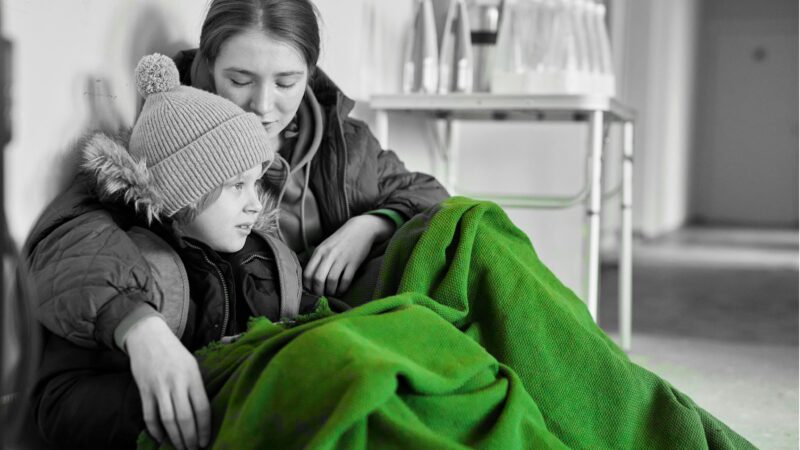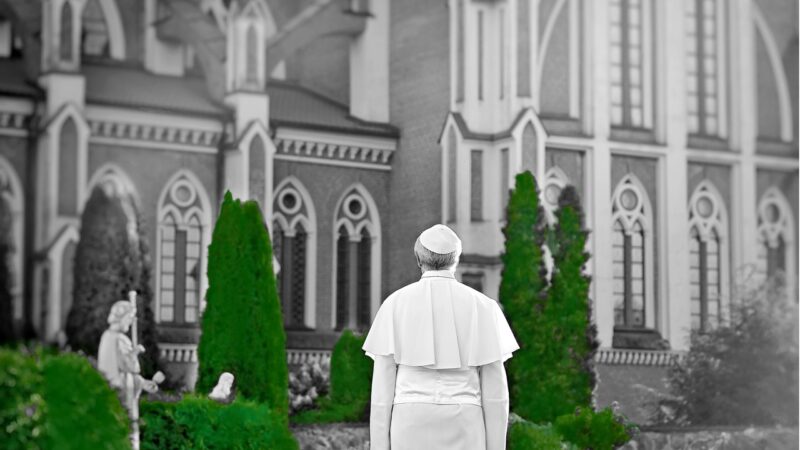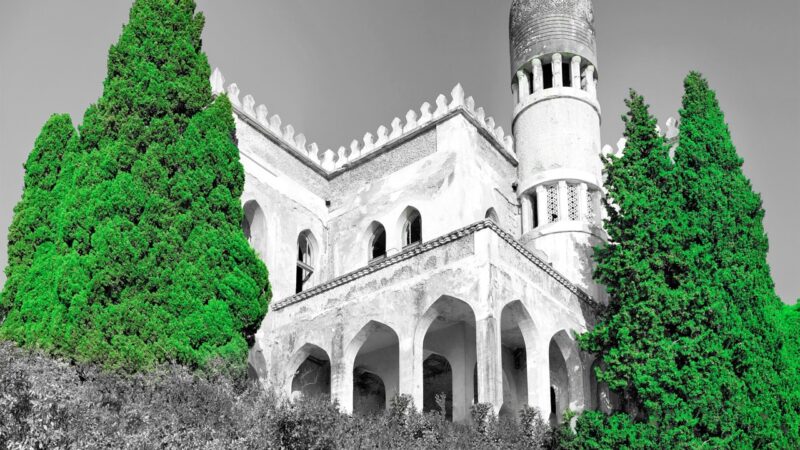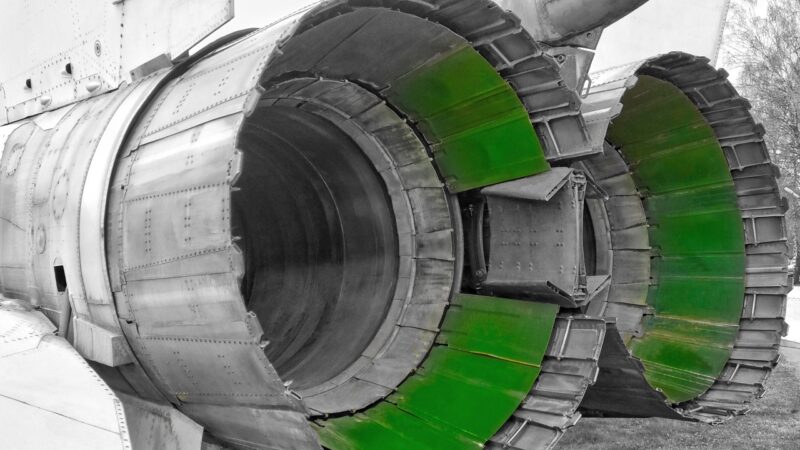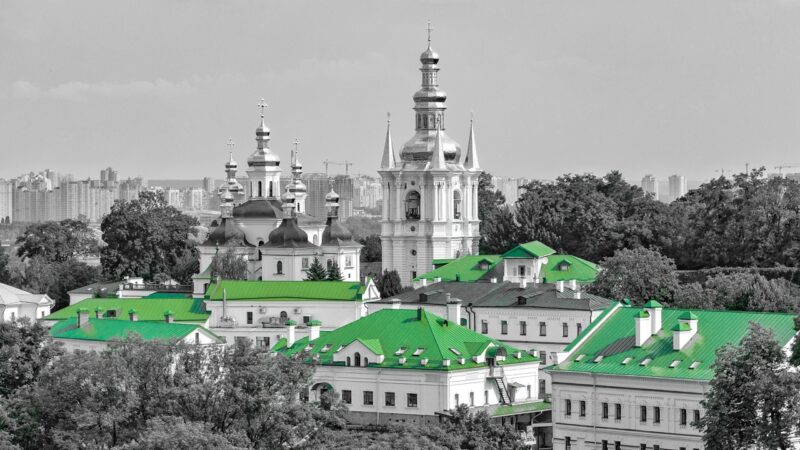Revolution of Dignity in Ukraine casts off once-dominant Russian Orthodox Church
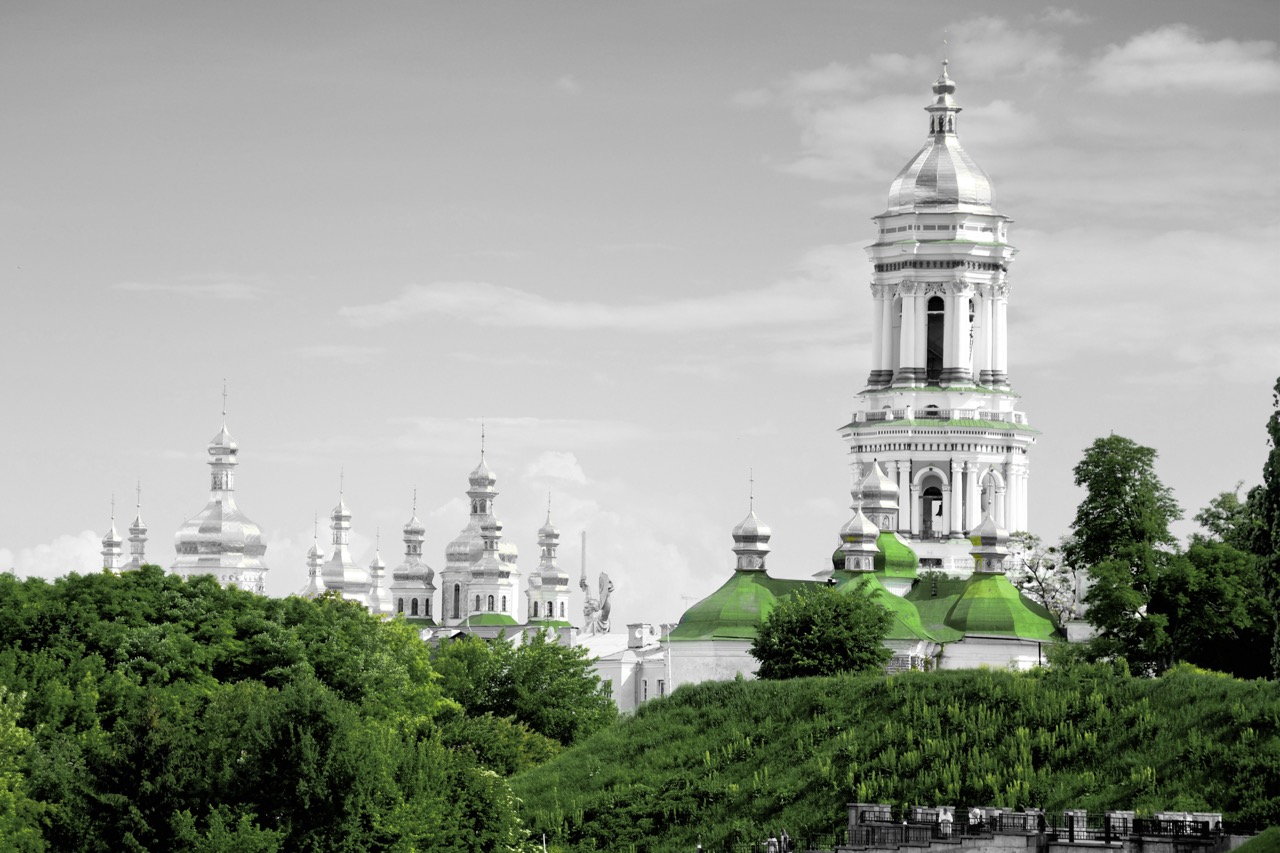
On March 29, 2023, the Kyivan Cave Monastery (“Kyiv-Pechersk Lavra” National Sanctuary) terminated its lease agreement with the Russian Orthodox Church (ROC) in Ukraine. On the same day, the archimandrite of the monastery, Avraamii, announced his transfer to the Orthodox Church of Ukraine. Contrary to the court-supported decision, a group of ROC monks led by the notorious Pavlo, Metropolitan of Vyshhorod and Chornobyl, refused to comply and continued to occupy some of the premises. (In secular life, Pavlo is Petro Lebid, nicknamed “Pasha Mercedes” due to his penchant for expensive cars and unmonastic luxury; he is known to be connected to Russian oligarchs, such as Vadim Novinsky, as well as to the Communist Party.)
The Kyivan Cave Monastery is an ancient holy site in Ukraine, founded in 1051 and included in the UNESCO World Heritage List. For more than eight and a half centuries it was one of the largest Orthodox shrines in Ukraine, until it was shut down by the Bolsheviks in 1929 as part of the official Soviet atheism policy, and in 1941 Soviet agents blew up its main church, the Dormition Cathedral. However, in 1988, when the Communist Party of the Soviet Union began to use the ROC more actively as an instrument of political influence, the Far Caves were handed over for use to its monastic community. Formally, the ROC does not own the monastery complex; rather, since Ukraine gained independence, it has been a national heritage site under control of the National Kyivan Cave Historical-Cultural Preserve, which includes a network of culturе-historical institutions: the Museum of the Book and Printing of Ukraine, the National Museum of Ukrainian Decorative Folk Art, the Museum of Historical Treasures of Ukraine, and others but uses its land, premises, and cultural artifacts for religious purposes. In 2013 Prime Minister Mykola Azarov (head of the Ukrainian government during the regime of President Viktor Yanukovych) attempted to transfer the Kyivan Cave Monastery to the ownership of the ROC, which sparked furious opposition from Ukrainian citizens.
Deceitful name, contradictory history
In a far-sighted move, the ROC in Ukraine refers to itself as the “Ukrainian Orthodox Church” (UOC). In the 1990s, it used the suffix “Moscow Patriarchate”—UOC-MP, in order to distinguish itself from the UOC-KP (Kyiv Patriarchate)—but it was removed in subsequent decades to avoid displaying the fact of the church hierarchy originating in Moscow. According to sociological studies, about one-fifth of the population in Ukraine identified itself as “Orthodox” without specifying the denomination. Therefore, this was a way to hold on to those faithful who did not have a deep understanding of canonical jurisdiction.
Although the ROC did not actually own the lavra monastery but only had a perpetual lease, it behaved as an owner—carelessly using the infrastructure of the complex, setting prices for various services, including admission to the territory, and so on. In fact, the negligent attitude toward national property became the formal justification for the termination of the agreement. An investigation by law enforcement agencies into the destruction of cultural heritage sites at the monastery by clergy of the ROC has been ongoing since 2017, after a relevant journalistic investigation appeared.
As for the history of the Ukrainian Church, in 1685 the Moscow Patriarchate gained control over it in violation of church canons. This happened as a result of simony—church corruption. The Patriarch of Constantinople, who sanctioned the transfer of jurisdiction of the Kyiv Metropolitanate to the ROC, was excommunicated by the Ecumenical Council, but this had only canonical consequences: although the Ecumenical Patriarchate did not recognize Moscow’s superiority over the Church in Ukraine, it could not actually change the situation.
The Kyiv Metropoly was founded in the 10th century—long before the Moscow Patriarchate and the Russian Orthodox Church existed—at the time when Christianity was proclaimed as the state religion by Grand Prince Volodymyr (he was subsequently canonized and granted the epithet “the Great”). Since its foundation, it has been connected with the Constantinople (Ecumenical) Patriarchate as its mother church. The spiritual and administrative jurisdiction of the Kyiv Metropoly encompassed a part of Rus’ (aka Kyivan Rus’) that today is in the European part of Russia.
After the rise of the Ukrainian Cossack Hetman state in the mid-17th century, during the Khmelnytsky Uprising some rapprochement was negotiated with Muscovy; immediately, the Muscovites tsars began to interfere in Ukraine’s church affairs, which caused significant resistance. For example, at the 1654 General Military Council (Estate Diet), the Metropolitan of Kyiv Sylvestr Kosiv and his clergy refused to endorse the newly signed Pereiaslav Treaty, citing Moscow’s non-canonical interference in the affairs of the Kyiv Metropoly. This further convinced the ROC that it would be impossible to strengthen its influence in Ukraine without establishing its authority over the Ukrainian Church. Following the ROC’s schismatic split from Constantinople, in 1685 the Metropolitan of Kyiv was consecrated for the first time in Moscow. The following year, the Ecumenical Patriarchate sanctioned a change in jurisdiction, essentially selling the Kyiv metropoly to the ROC as a “reward”—and under pressure from the Ottoman vizier, who had concluded a peace treaty with Muscovy several years earlier and wanted to maintain good neighbourly relations with it.
An attempt to restore autocephaly for the Ukrainian church in alignment with Orthodox doctrine was made in Kyiv simultaneously with the political Struggle for independence (1917–20), but by 1937 this church was completely destroyed by the Bolshevik authorities. During WW II Stalin legalized the activities of the ROC, but this liberalization did not affect the Ukrainian Church. The Kremlin-steered ROC was able to act unimpeded in Ukraine during the Soviet era; by the time of Ukraine’s independence in 1991, this led to a paradoxical situation where the ROC in Ukraine (UOC-MP) received incomparably more resources, while the Ukrainian Orthodox churches had to practically start from scratch in their own country. The three largest monasteries in Ukraine—all three of them with lavra status—had until recently “belonged to” the ROC. Moreover, the Ukrainian Greek Catholic Church (UGCC) had been “officially” liquidated in 1946 (by a false Sobor), and independent Ukrainian Orthodox denominations that were not controlled by Moscow could operate only in the Ukrainian diaspora. (Even abroad, the ROC wields some not insignificant influence—maintaining an eparchy with twenty parishes across Canada, for instance, having gained a beachhead there when the Ukrainian churches failed to send clergy along with the first wave of immigrants in the 1890s.)
Orthodox Christians make up more than two-thirds of the population of Ukraine. In Ukrainian society, the Church has traditionally been in the top three institutions with the highest level of trust. With believers outnumbering non-believers in all age groups of the population, the Kremlin has for generations considered controlling the Church in Ukraine to be a very important tool of ideological influence, which it does not want to lose.
In 2019, Ecumenical Patriarch Bartholomew I declared that Constantinople had never recognized Moscow’s jurisdiction over Ukraine—which was not canonical—and issued a tomos (a church constitutional decree) that legalized the autocephaly of a new Orthodox Church of Ukraine (OCU). The young and active Metropolitan Epiphanius (secular name: Serhiy Dumenko) was elected primate of the OCU, and thanks to its public recognition by the Ecumenical Orthodoxy whole parishes of the UOC-MP, and even bishops, began to transfer to the OCU.
Today the UOC-MP (ROC) has significantly diminished flocks, but it still controls disproportionately large amounts of church buildings, infrastructure, and land. Thus, the current events with the various Ukrainian Orthodox denominations could be considered a grassroots church revolution.
ROC is really a toxic cult
A mere four months after the tomos was granted, 48.8% of Ukrainians were identifying themselves with the OCU, while 14.2% were still aligned with the Moscow-controlled UOC-MP; in May 2019, 54.2% of Ukrainians expressed a positive attitude toward the tomos and the OCU. By July 2022, the share of faithful adhering to the Moscow Patriarchate had fallen to 4%, not least influenced by the full-scale invasion, which was openly supported by the ROC. The Moscow Patriarch declared that Russians who participate in the invasion against Ukraine will receive blanket dispensation of all sins. At the same time, statistics from the Ministry of Culture of Ukraine indicated that the ROC in Ukraine had more than twice as many church buildings and structures as the OCU (11,157 versus 5306 as of 1 January 2020), although the OCU had 13.5 times more parishioners (54% versus 4%).
The toxicity of the Russian Orthodox Church has become evident even to its flocks in Ukraine. As of March 2022, 16 out of 56 eparchies of the UOC-MP stopped mentioning the ROC Patriarch Kirill among the Church hierarchy during the Divine Liturgy, yet it is unlikely to stop further losses of his church’s positions in Ukraine. The ROC has ever positioned itself as the only “canonical” church, and the prospect of being abandoned by the Ukrainians only to become the church of a national minority—namely Russians, whose share in Ukraine has been steadily decreasing for decades—is not acceptable to them. As a matter of fact, the majority of ROC flocks has always been in Ukraine, and therefore they perceive being the only dominant church as a key to their survival.
The UOC-MP has been a carrier of dubious values in Ukraine and has often been involved in scandals. For a long time, it refused to use vernacular Ukrainian in services, instead using a Russian version of Church Slavonic that was promoted for the sake of church unification throughout the Russian Empire in the early 18th century. In 2015, the ranking hierarch of the ROC in Ukraine, Metropolitan Onufriy, refused to rise to his feet with all those present at a parliamentary session honouring Ukrainian soldiers who died in the Russo-Ukrainian war. He also stated that the Holodomor—an artificial famine perpetrated against Ukrainians by the Bolshevik regime in the 1930s and recognized as an act of genocide by almost 30 states in the world as well as the European Parliament—was God’s punishment of Ukraine, “humbling our pride.” According to the Mass Information Institute (a Ukrainian think-tank that monitors the media landscape in Ukraine), in Q3 of 2018, at the height of the pre-tomos reportage, half of all the advertorials in the Ukrainian media were devoted to “whitewashing” the ROC in Ukraine.
During the past decade, the overall ROC has increasingly become like a totalitarian sect, dominated by isolationist fanaticism, eschatological expectations, and uncritical devotion to its leaders, while prohibiting dialogue, consensus, or diversity. However, the problem runs deeper. The issue at hand is not just moral hypocrisy but primarily a serious threat to national security from an organization that is ideologically driven by the Kremlin-originated imperialist myth of “Slavic unity.” In the context of the Russian occupation, the Ukrainian state cannot continue to turn a blind eye to the ROC’s activities. According to investigations by Swiss journalists, the Moscow Patriarch Kirill (Gundyaev) was a KGB agent since at least the 1970s. According to the Security Service of Ukraine (SBU), 61 priests of the UOC-MP are involved in criminal cases under suspicion of state treason, justifying aggression against Ukraine, or collaborationism. Due to the slowness of the legal system, only seven of them have been convicted in court. On the other hand, Russia sees these priests as valuable agents. This is evidenced, for example, by the practice of exchange: in April 2023, one collaborationist priest was exchanged for 28 Ukrainian prisoners of war.
Conclusions
Obviously, under the present circumstances, Ukraine cannot wait for the “peaceful extinction” of the ROC in Ukraine, because despite the rapid reduction of its supporters in recent years, a disproportionately high share of the property remains under the control of the religious communities loyal to it, which gives them an institutional advantage—and institutional advantage can only be overcome by institutionalized means.
Without a deeper understanding of the cultural, historical, and social context of religious, ecumenical, and interdenominational relations, it is difficult to understand what is actually happening in Ukraine. And the lack of this understanding in global audiences is used by Russian propaganda to try to present Ukraine’s efforts to rectify historical injustices as “religious discrimination.” The battlefront in Ukraine also lies in the realm of religion and the church. In fact, there is an “ecclesiastical Maidan” in Ukraine, which is the result of a social demand for change. If there is any discrimination to be spoken of, it is the prolonged dominance of the ROC in Ukraine and the decades-long inability of the Ukrainian faithful to exercise their canonical right to an autocephalous church. Ten years ago, the burning questions on the Maidan were about equal rights and opportunities, while now a more serious question has arisen in the context of the full-scale invasion: сan Ukraine tolerate a sectarian organization that cannot accept the very fact of its existence?
Supplementary content and IEU reference hyperlinks contributed by Ksenia Maryniak, CIUS Editor.

